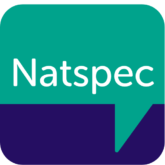A goal-scaling approach for use across disciplines with any students where individual goals are set as part of the therapy process.
Details of GAS-Light can be found here.
Overview
Measurement of outcomes through goal attainment scaling (GAS) was first introduced in the 1960s by Kirusek and Sherman for assessing outcomes in mental health settings and later for effectiveness of brain injury rehabilitation. Since then, it has been modified and applied in many other areas, including the management of spasticity by Ashford and Turner Stokes. GAS-Light is a simplified version designed to be used in routine clinical practice, adapted by the Cicely Saunders Institute of Palliative Care, Policy and Rehabilitation at King’s College London.
Purpose of tool
GAS-Light measures what matters to the individual and provides quantitative and qualitative information on progress and achievement. Rather than using any universally prescribed set of expectations, it enables therapists to score the extent to which a student’s individual goals are achieved in the course of an intervention. It is a sensitive measure enabling small steps of progress towards goals to be recognised.
Who is the tool for?
GAS-Light can be used by a multidisciplinary team or by individual therapists of any discipline and for any client group where individual goals are set as part of the therapy process.
Notes on use
- Set realistic SMART goals with the student; this may require sensitive negotiation with the student and family.
- GAS-Light can measure and demonstrate individual student progress and achievement in line with Education Health and Care Plan targets or objectives.
- It can also show where deterioration has been halted which may be a significant outcome for some PMLD students.
- Because goals are set in relation to client priorities, it is difficult to produce meaningful comparable quantitative data across a cohort or service. However, the tool does allow for qualitative and quantitative person-specific data to be gathered and enables comparisons against starting points for individuals.
Training
Training is available but not mandatory. Some free training resources are available. Once a member of the team is fully trained, they can train others in the use of GAS-Light.
There is a small fee for use of the tool but no licence is required.
References
A full set of references is provided on the King’s College London website.

